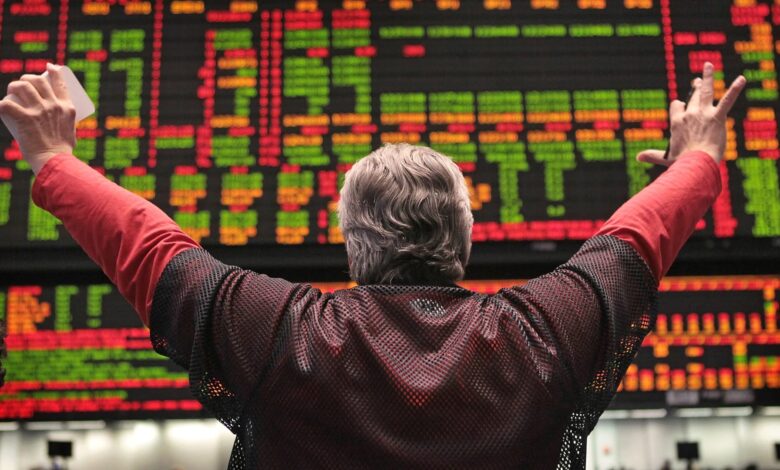Bond market ‘yield curve’ returns to normal from inverted state that had raised recession fears

A trader signals an offer in the Standard & Poor’s 500 stock index futures pit at the CME Group in Chicago on Dec. 14, 2010.
Scott Olson | Getty Images News | Getty Images
The relationship between the 10- and 2-year Treasury yield briefly normalized Wednesday, reversing a classic recession indicator.
Following economic news that showed a sharp decline in job openings and dovish remarks from Atlanta Fed President Raphael Bostic, the benchmark 10-year yield inched above the 2-year for the first time since June 2022.
The respective yields were both around 3.79% on the session, with just a few thousandths of a percentage point separating them.
10-year yield vs. the 2-year
An inverted yield curve, in which the nearer-duration yield is higher, has signaled most recessions since World War II. The reason why shorter-duration yields rose above their longer-duration counterparts is essentially the result of traders pricing in slower growth out into the future.
However, a normalization of the curve does not necessary signal good times ahead. In fact, the curve usually does revert before a recession hits, meaning the U.S. could still be in for some rough economic waters ahead.
“If you don’t have any sense of history regarding the economy, needless to say it would be positive,” said Quincy Krosby, chief global strategist at LPL Financial. “However, statistically the yield curve will normalize as the economy actually does go into a recession or is in a recession simply because the Fed is going to be cutting rates” in response to a slowing economy.
The price action followed a Labor Department report showing that job openings unexpectedly slid below 7.7 million in July, bringing supply and demand almost even following a severe imbalance since the Covid crisis. Job openings had exceeded labor supply by more than 2 to 1 at one point, aggravating inflation that had been at its highest level in more than 40 years.
At the same time, Atlanta Federal Reserve President Raphael Bostic released comments, around the same time the job openings report dropped, indicating that he’s ready to start reducing rates even with inflation running above the central bank’s 2% goal.
Lower rates are seen as a boost for economic growth; the Fed has held its benchmark rate at its highest level in 23 years since July 2023, targeted in a range between 5.25%-5.5%.
While the market most closely watches the relationship between the 2-year and 10-year, the Fed more closely observes the relationship between the 3-month and 10-year. That part of the curve is still steeply inverted, with the difference now at more than 1.3 percentage points.




